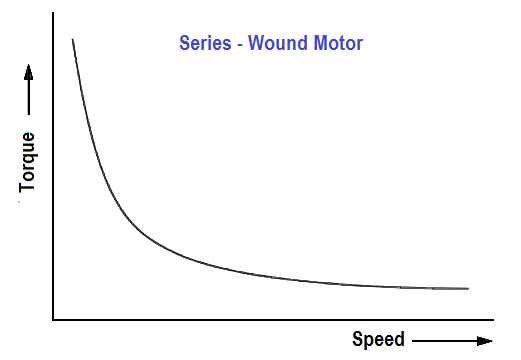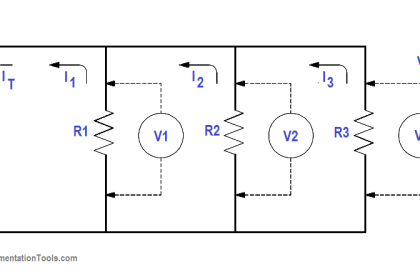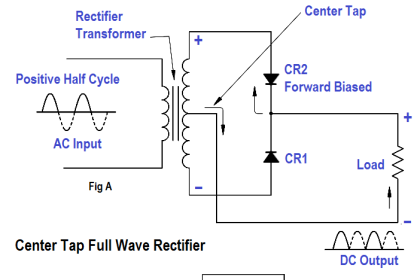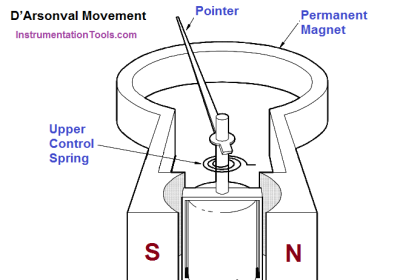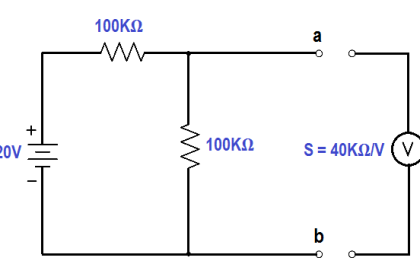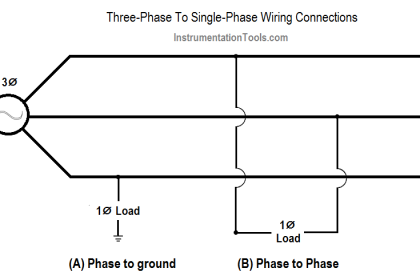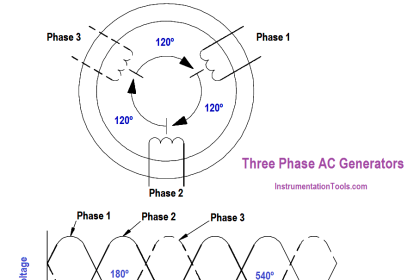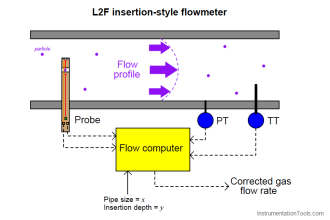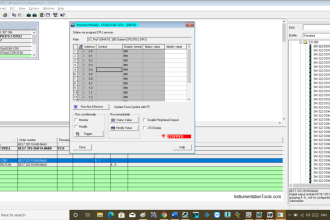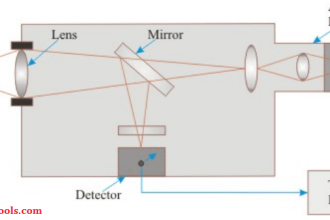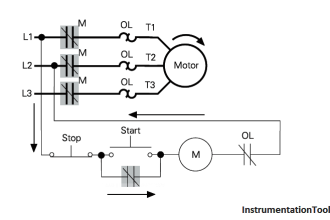Since the armature and field in a series-wound motor are connected in series, the armature and field currents become identical, and the torque can be expressed as shown in below Equation.
T = K Ia2
The torque-vs-speed characteristics of a series-wound motor with a constant voltage source are shown in Figure 9. As the speed decreases, the torque for a series – wound motor increases sharply. As load is removed from a series motor, the speed will increase sharply. For these reasons, series-wound motors must have a load connected to prevent damage from high speed conditions.
Figure 9 : Torque-vs-Speed for a Series-Wound Motor
Series-Wound Motor Applications
The advantage of a series-wound motor is that it develops a large torque and can be operated at low speed. It is a motor that is well-suited for starting heavy loads; it is often used for industrial cranes and winches where very heavy loads must be moved slowly and lighter loads moved more rapidly.
